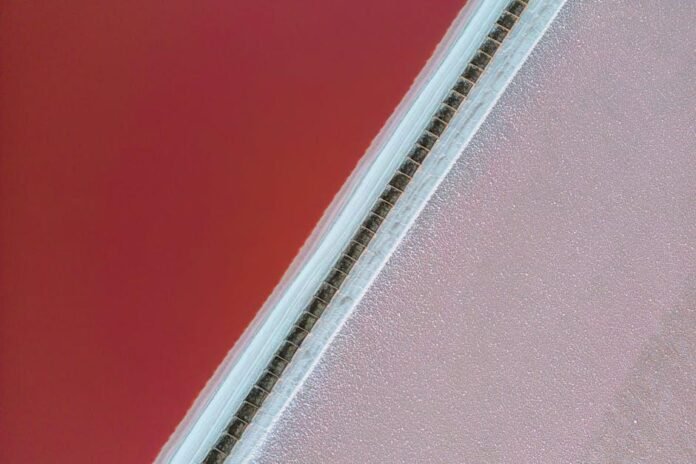In the realm of household cleaning and personal care, the choice of materials often dictates not only effectiveness but also efficiency. Among the myriad options available, microfiber towels and regular cloths stand out as two popular contenders. While both serve the essential purpose of wiping away spills and grime, they each bring a unique set of characteristics to the table. As we dive into the world of textiles, we’ll unravel the differences between these two cleaning companions, exploring their composition, absorbency, durability, and versatility. Whether you’re a meticulous housekeeper or simply seeking the best tools for your daily tasks, understanding the strengths and weaknesses of microfiber towels versus regular cloths is the first step toward making an informed choice that suits your needs. Join us as we compare these two cleaning staples and discover which one might earn a permanent place in your arsenal of household essentials.
Understanding the Unique properties of Microfiber Towels
Microfiber towels are distinct in their design and effectiveness, composed of tiny fibers that are significantly finer than human hair. These fibers create an enormous surface area, allowing them to absorb up to seven times their weight in water.Unlike regular cloths, they utilize both capillary action and their unique structure to trap dirt, dust, and moisture efficiently.This results in a swift-drying feature that reduces the likelihood of mildew and odors, making them a superlative choice for both home care and on-the-go situations.
Another remarkable attribute of microfiber towels is their lint-free quality. This ensures that surfaces remain pristine and scratch-free, unlike many traditional cloths that may leave behind fibers.Moreover, microfiber towels are compatible with various cleaning solutions, making them equally effective when used dry for dusting or wet for deep cleaning. Their durability is noteworthy as well; with proper care, they can withstand hundreds of laundry cycles without losing their effectiveness, setting them apart as a long-term investment.
| Property | Microfiber Towels | Regular Cloths |
|---|---|---|
| Absorbency | 7x weight | Limited |
| Drying Time | Fast | Slow |
| Scratch Resistance | High | Variable |
| Longevity | 100+ washes | Fades quickly |
The Versatility of Microfiber Towels in Everyday Use
microfiber towels have emerged as essential tools in daily life, thanks to their unique properties that significantly enhance various tasks. Unlike regular cloths, which can leave lint and may not absorb moisture effectively, microfiber towels feature millions of tiny fibers that maximize their surface area and absorption capacity. This innovative design translates to unparalleled performance in multiple scenarios, from drying dishes to cleaning surfaces. Some notable uses include:
- Household Cleaning: Their ability to trap dust and dirt makes them ideal for sweeping down surfaces without the need for chemical cleaners.
- Drying Hair: Microfiber is gentler on hair and dries it faster than a traditional towel.
- Automotive Care: They prevent scratches while effectively polishing and drying cars.
Moreover, the lightweight and compact nature of microfiber towels make them perfect for on-the-go applications.Whether you’re heading to the gym or traveling, these towels easily fit into bags without adding bulk. Their quick-drying properties also promote hygiene, as they do not harbor bacteria like regular cloths may. Here’s a quick comparison highlighting key attributes:
| Feature | Microfiber Towels | Regular Cloths |
|---|---|---|
| Absorption | High | Moderate |
| Lint Residue | No | Yes |
| Drying Speed | Fast | Slow |
| Durability | Long-lasting | Variable |
Comparing Durability and Longevity of Cloth Materials
When it comes to durability, microfiber towels often take the lead due to their unique synthetic composition. crafted from ultra-fine polyester and polyamide fibers, microfiber towels can withstand rigorous use without fraying or fading. In contrast, regular cloths, often made from cotton or other natural materials, may show signs of wear and tear more quickly. This is notably evident in high-abrasion tasks or repeated wash cycles. Key factors that illustrate this disparity in durability include:
- Resistance to Stains: Microfiber is less likely to absorb stains compared to regular cloths.
- Washability: Microfiber retains its integrity over numerous washes, while cotton may shrink and degrade.
- Longevity in Performance: Microfiber maintains efficiency for longer periods in cleaning applications.
Longevity ties closely with how each material interacts with environmental factors and daily use. Microfiber towels can last for hundreds of washes without significant loss in performance, making them a wise investment for frequent use. Regular cloth materials, while generally softer and perhaps more comfortable, may need to be replaced with greater frequency. To illustrate this difference, consider the following comparison:
| Material Type | Durability Rating | Average Lifespan (Washes) |
|---|---|---|
| Microfiber | High | 500+ |
| Regular Cloth | Medium | 100-200 |
Choosing the Right Cloth for Your Cleaning Needs
When it comes to tackling cleaning tasks, the choice of cloth can significantly impact effectiveness. Microfiber towels have gained popularity for their unparalleled cleaning power. These towels are constructed from a blend of polyester and polyamide,creating a dense fabric with ultra-fine fibers. This unique structure enables microfiber to trap dirt, grime, and bacteria more efficiently than most regular cloths. Here are some of the advantages of using microfiber:
- superior absorption: Microfiber can hold up to seven times its weight in water.
- Non-scratch surface: Ideal for delicate surfaces, preventing scratches.
- Reusable: Durable enough to withstand numerous wash cycles, making them eco-pleasant.
In contrast, regular cloths—often made from cotton or synthetic materials—tend to offer a more conventional cleaning experience. While they can be effective for everyday tasks, their performance can vary widely based on material and weave. Here are some notable considerations when using standard cloths:
| Feature | Microfiber Towels | Regular Cloths |
|---|---|---|
| Durability | High | Medium |
| Absorption | Excellent | Variable |
| Eco-friendliness | Reusable & Washable | Depends on Material |
While both options have their place, for serious cleaning enthusiasts or anyone keen on achieving a polished finish with minimal effort, microfiber towels are typically the superior choice. evaluating the nature of your specific cleaning tasks can lead to a more informed decision, ensuring your cleaning arsenal is well-equipped for any challenge.
to sum up
In the grand showdown between microfiber towels and regular cloths, the choice ultimately hinges on your specific needs and preferences. Microfiber towels, with their super-absorbent fibers and gentle touch, rise to the occasion for those seeking efficiency and elegance in their cleaning routine. They whisk away dirt and moisture with ease, making them perfect allies for both home care and personal grooming. On the other hand, regular cloths offer a sense of familiarity and versatility, frequently enough weaving nostalgia into our everyday tasks, whether it’s a cherished dish towel or a well-loved bath cloth.
As you embark on your next cleaning project or self-care routine, consider the strengths and limitations of each option. The decision is less about which is superior and more about what suits your lifestyle best. After all, whether you select the cutting-edge fabric of microfiber or the reliable comfort of traditional cloth, the goal remains the same: to create spaces that are comfortable, clean, and inviting. So arm yourself with the right tools, and let your cleaning adventures begin!









